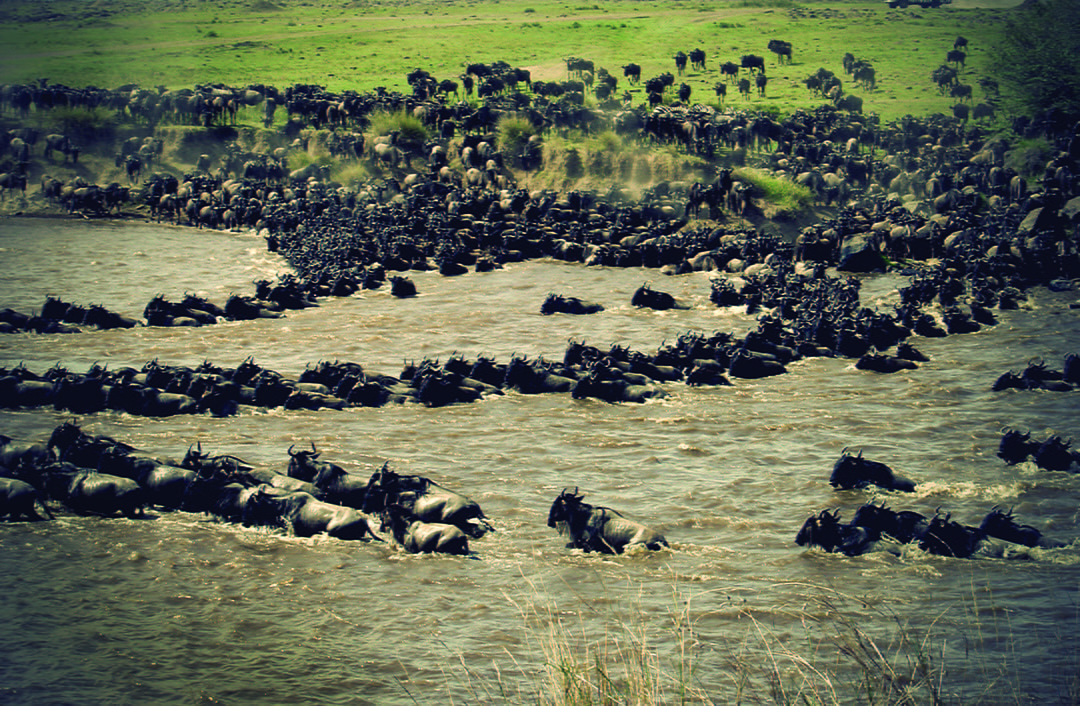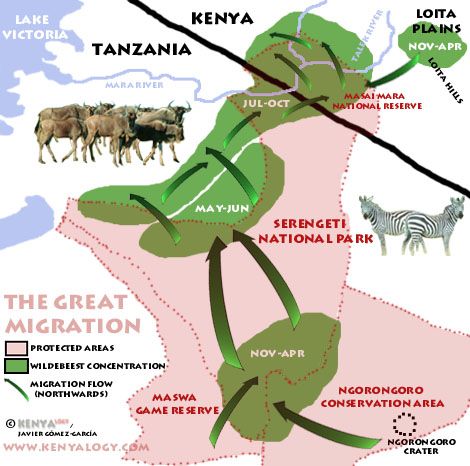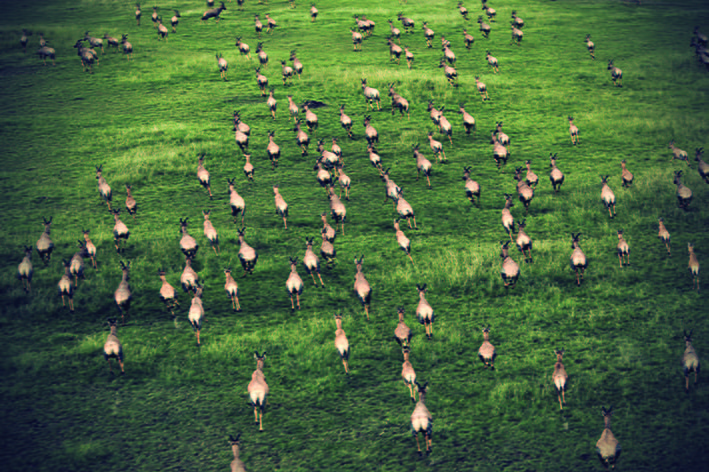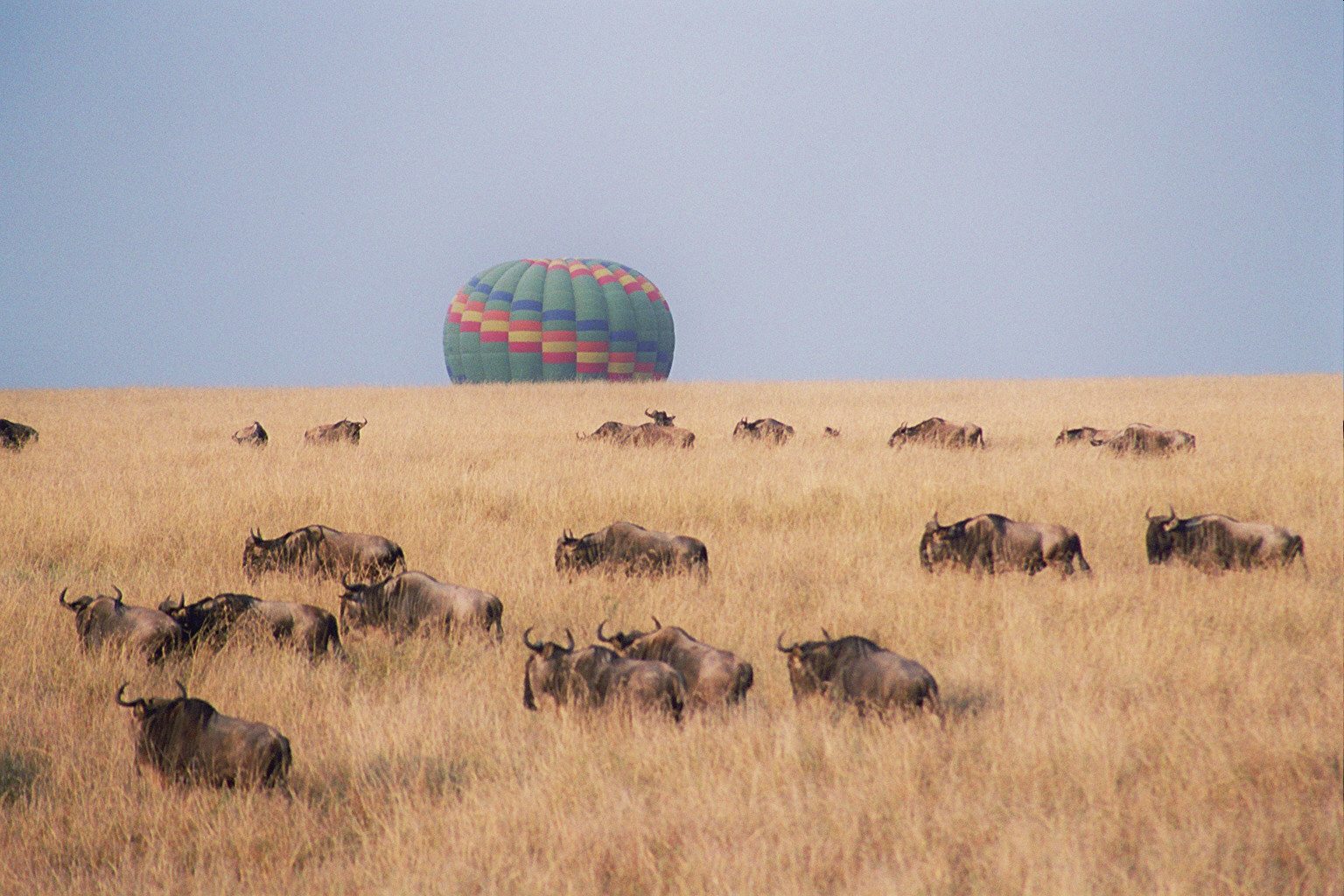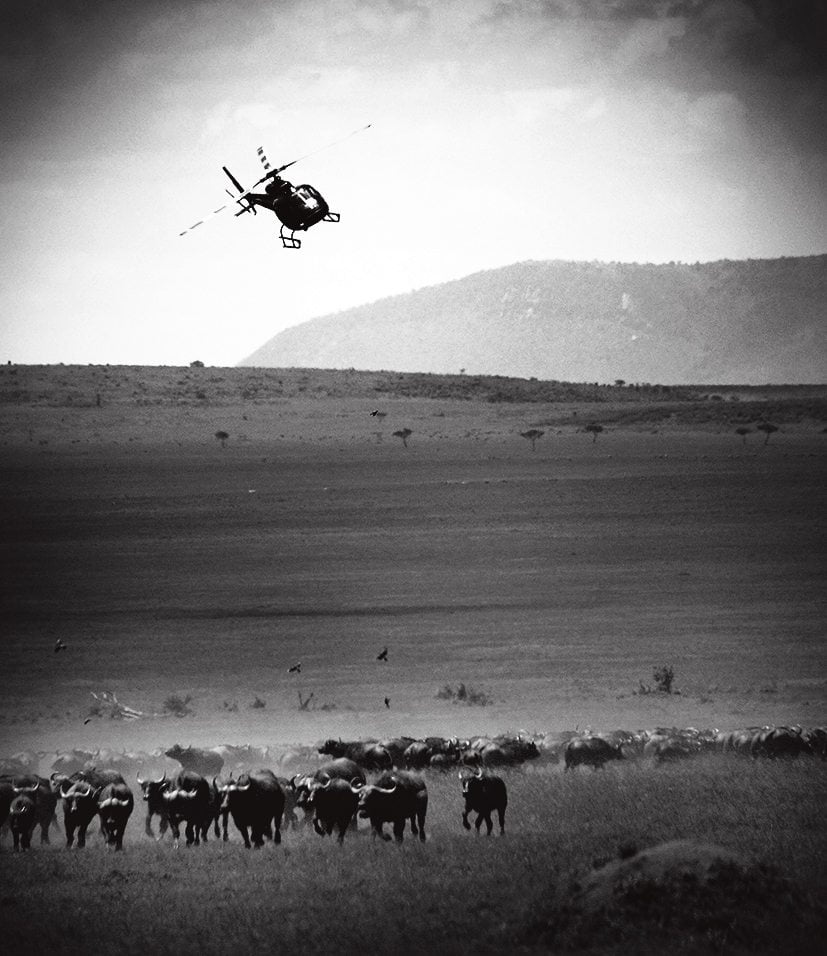
With Lady Lori, you can soar on silent wings across the breath-taking savannah grasslands of the Maasai Mara.
The largest mass movement of land mammals on the planetand one of the most breathtaking events in the animal kingdom, The Great Migration involves millions of ungulates, most notably wildebeest, as they follow an annual circular route around the Serengeti Ecosystem in an endless quest for fresh pastures and water. The rumbling hooves of wildebeest and the clouds of red dust they leave behind have become a symbol of the Serengeti, as well as a strong migratory instinct that defies crocodile-infested rivers, wild currents, and flocks of predators lying in wait.
A 500km round trip from the Southern Serengeti to the northern edge of the Masai Mara National Reserve, the Great Migration is probably Africa’s greatest wildlife spectacle and one of the World’s most exceptional natural phenomena.
The vertiginous immensity of the event is overwhelming, numbers so large that they are hard to visualize. Migrants include 1,300,000 Wildebeest, 360,000 Thomson’s Gazelle, 191,000 Zebra, and 12,000 Eland.
They join the anyway-large resident populations of herbivores, that feature 95,000 Topi, 76,000 Impala, 46,000 African Buffalo, 26,000 Grant’s Gazelle, 14,000 Kongoni, 9,000 Giraffe, 6,000 Warthog, 2,000 Waterbuck, and 2,000 Elephant.
And then, adding pathos and drama to the already extraordinary spectacle, a hungry constellation of predators -most notably lions and hyenas- follow the herbivores all along their clockwise migratory route.
Lions and hyenas are not the only meat-eaters, though, as cheetahs, leopards, wild dogs, and jackals, as well as every scavenger of the area, wait impatiently for their share of the banquet.
The Great Migration is a relatively recent phenomenon, dating back to the early 1960s. In the late 19th century a rinderpest epidemic eliminated over 90% of the wildebeest and cattle in the region. To prevent a further spreading of the disease, cattle was inoculated by veterinarians, and the disease soon disappeared from the area. As a result, the wildebeest population boomed in the 60´s and 70´s, from 260,000 to the 1.4 million individuals that currently inhabit the Serengeti ecosystem.
The growing herds were thus forced to migrate in their search for water and grazing grassland, starting the circular migratory route. The first seasonal treks were probably observed -and documented- in the 60s by Dr. Grzimek, who first described a definite pattern in the migratory moves.
In spite of the exceptionality and sheer beauty of the event, not everybody sees it with sympathy. The Maasai, for example, must rear their livestock in competition with the migrant herbivores, which they regard as transmitters of diseases and guilty of poisoning the rivers with their foetal sacs.
If you’re planning a photographic safari to anywhere in the Serengeti ecosystem, make sure you coincide with the wildebeest migration. If your schedule imposes travelling during the late July – September period, consider the Maasai Mara national Reserve , where most of the wildlife is to be found. In any case, make the impossible to be in the right place at the right time for meeting the wildebeest and their co-migrant companions and foes.
Interesting Facts
- Wildebeest are also called Gnu because of the grunts they make which sound like “gnu” “gnu”.
- Wildebeest young are almost all born during a three week period (an estimated 400,000 each year). This overwhelming supply of potential food for predators means more of them survive.
- Wildebeest are born to run. They can run alongside their mothers just minutes after they are born.
- Wildebeest and Zebra graze in harmony because each animal prefers a different part of the same grass.
- No two zebra look exactly the same.
- It is estimated that around 250,000 wildebeest die while on the migration circuit.
- The migration is a natural phenomenon that only started in the 1960’s.
Our CEO and pilot Ian Mimano managed to video this remarkable natural phenomenon from literally metres away which you can view here.Via: www.iserengeti.com/wildebeest-great–migration.html, goafrica.about.com › … › Africa Travel › African Safari Information, www.wildwatch.com/great_migration


